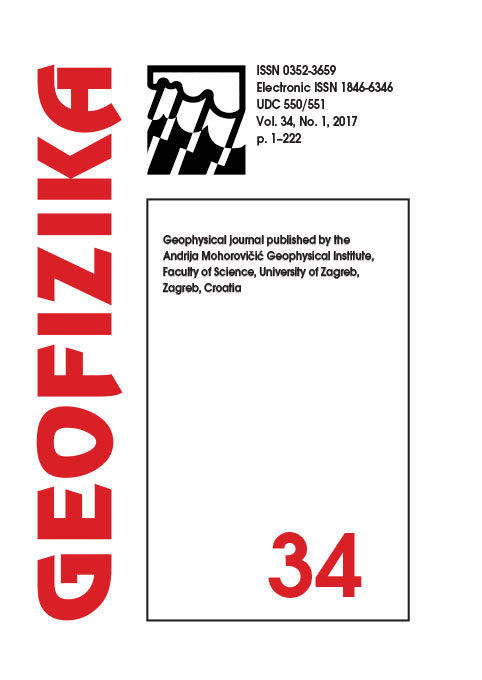The effects of ocean SST dipole on Mongolian summer rainfall
DOI:
https://doi.org/10.15233/gfz.2017.34.10Keywords:
artificial neural network, dryland, Mongolian rainfall, rainfall prediction, SST teleconnectionAbstract
Cross-correlations between inter-annual summer rainfall time series (June to August: JJA) for arid Mongolia and global sea surface temperatures (GSST) were calculated for prediction purposes. Prediction of summer rainfall for four vegetation zones, Desert Steppe (DS), Steppe (ST), Forest Steppe (FS), and High Mountain (HM) using GSSTs for time lags of 5, 6, and 7 months prior to JJA rainfall was evaluated. Mongolian summer rainfall is correlated with global SSTs. In particular, the summer rainfall of FS and HM displayed high and statistically significant correlations with SST in specific parts of the oceans. SST dipoles (pairs of positively and negatively correlated areas) were identified, and correlation for time series of the SST differences between SST dipoles (positive - negative) with the summer rainfall time series was larger than the original correlations. To predict the summer rainfall from SST, an artificial neural network (ANN) model was used. Time series of the SST difference that represents the strength of the dipole were used as input to the ANN model, and Mongolian summer rainfall was predicted 5, 6, and 7 months ahead in time. The predicted summer rainfall compared reasonably well with the observed rainfall in the four different vegetation zones. This implies that the model can be used to predict summer rainfall for the four main Mongolian vegetation zones with good accuracy.
Downloads
Published
Issue
Section
License
Copyright (c) 2021 Geofizika journal

This work is licensed under a Creative Commons Attribution-NonCommercial 4.0 International License.

